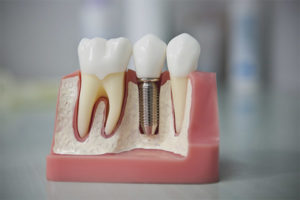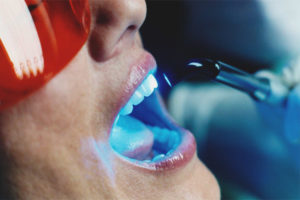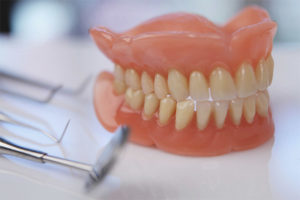The content of the article
Flux is an inflammation of the periosteal part of the jaw, or rather, the tooth root. First, the inflammation begins inside this root, then goes to the soft tissues (gums), and then grows as a purulent lump. That is, we see only the tip of the iceberg, and the root of the disease sits deep inside the root of the tooth. To get rid of the flux is quite difficult, especially when it comes to home conditions. The flux itself is sometimes opened, pus flows out. All this brings temporary relief. But internal inflammation continues to develop, and a purulent lump may form again. Before understanding how to get rid of the flux once and for all, we will try to understand the symptoms and causes of this disease.
How to recognize flux
At an early stage of development, flux is often confused with gingivitis, pulpitis and other dental diseases. Only a doctor can make an accurate diagnosis, here are some signs that may indicate inflammation of the periosteum (flux).
- Severe pain on the gums, which is worse when pressed. In the later stages of the development of the disease, acute pain may be given to the head or neck.
- Purulent flux is characterized by a clear purulent sac with clear edges. Sometimes the flux can be red, but more often it is purulent white.
- If the flux grows, swelling and swelling can go to the cheek, lips, nose, eyelids. With severe flux, asymmetry of the face appears.
- In the period of exacerbation of purulent disease, fever may occur, the patient’s general condition worsens - he feels unwell.
- Due to the inflammation of the gums become red, irritated.
- When flux appears on the upper gum, the upper lip swells, bags appear under the eyes. If the flux is on the lower gum, the neck swells and the lymph nodes may even inflame.
If the flux is not treated or is wrong, it can lead to an abscess or phlegmon.In addition, prolonged inflammation of the periosteum may cause loosening of the gums. As you understand, that is fraught with tooth loss. But where does this flux come from?
Causes of flux formation
Indeed, why do some people suffer all the time with various inflammatory processes in the oral cavity, while others do not even have an idea what a flux is? Here are some factors that may be the cause of the inflammatory process in the periosteum.
- The most common cause of flux development is caries and inflammation of the dental nerve. If the disease is not treated in time, it leads to infection of neighboring organs.
- Inflammation may begin due to infection in an open wound or cut on the oral mucosa. If you have damaged or scratched the gum during a meal, it is imperative to process an open wound. This may also include surgical damage to the mucous membrane. If there was a dental operation and an infection got inside, it can also lead to the development of a flux.
- Any injuries, bruises and blows to the jaw can be the beginning of inflammation.
- Sometimes flux appears as a complication after some dental diseases - stomatitis, gingivitis, etc.
- A sore throat can also be a provoking factor for the development of a flux, since the infectious focus is very close.
In general, you need to understand that flux is the ingestion of bacteria and microbes inside an open wound, which the immune system cannot cope with. That is, the disease is much worse, if under the blow of a child or a pregnant woman. Usually, periostitis (flux) is diagnosed based on a simple examination by a doctor. Sometimes for accurate diagnosis requires x-rays. Sometimes they donate blood for analysis to determine the degree of inflammation.
Drug treatment of flux
It is difficult to cure any purulent inflammation without antibiotic therapy. Antibiotics need almost anyway. At the early stage of the disease, they will help suppress the onset of the inflammatory process and prevent surgery. Antibiotics are also needed after the operation if the flux had to be removed from the dentist. The medicine will help suppress the inflammation and prevent the development of a relapse. Only a doctor can select an antibiotic; ideally, bacteriological seeding should be tested for sensitivity to certain antibiotics.However, there are broad-spectrum antibiotics that can help suppress inflammation in 90% of cases. Ceftriaxone, Amoxiclav, Cyfron, Ampioks, Lincomycin, etc. are among the most effective and efficient. At the same time, it is necessary to drink probiotics, which restore the healthy intestinal microflora after the destructive effects of antibacterial therapy.
In addition, in the treatment of flux is used and external treatment. To do this, you can smear the gums with the ointment of Vishnevsky or Levomekol - they disinfect the mucosal surface and prevent inflammation from spreading. It is possible to spray sprays on the flux, which are used in the treatment of angina and other inflammations in the throat area. Just direct the spray to the inflamed area of the mucous membrane and make a couple of taps. Tantum Verde, Hexoral, Ingalipt, etc. helps to get rid of the pain and the source of infection very well. If the flux is very worried, Metrogil Dent or Kalgel ointment, which is used to relieve teething in children, will help get rid of the aching pain. Such remedies do not just relieve pain, they freeze the mucous and relieve any sensations.For the treatment of flux, ichthyol ointment is often used, which not only has antiseptic properties, but also softens tissues. This allows the pus to "break out" faster.
In addition, doctors recommend taking non-steroidal anti-inflammatory drugs, such as Nimesil. This tool reduces the temperature, relieves pain. If the pain is strong enough, you can use painkillers - Analgin, Ketonal, etc. Also, doctors recommend taking antihistamine medicine - suprastin or Zyrtec in order to remove the swelling. But remember that only a doctor should prescribe medications. By the way, they can be effective only at the beginning of the disease. If you have a suggestive bump on your face, you cannot do without an operation.
Surgical treatment of flux
Do not be afraid of going to the dentist. An experienced doctor quickly "neutralize" the flux, so much so that it was his last manifestation. Otherwise you risk to suffer from purulent inflammation for more than one month. Remember, before going to the doctor you should not drink painkillers, because they can complicate the process of diagnosis.
- First, the doctor makes anesthesia, so the patient feels almost nothing.
- After this, an incision is made next to the flux and all pus is released. If necessary, make a cut and bone tissue.
- Then everything is carefully treated with an antiseptic - this is the key to the absence of relapse.
- Sometimes pus from periosteal tissue flows out for quite a long time, so the doctor can supply drainage so that the gum does not heal prematurely.
- After some time, the drainage is removed, the inside of the wound and once again well treated. If bone damage occurs, it is restored. The gum itself tightens and heals on its own. If the incision is very large, several stitches are applied.
- If the flux is serious enough and the area of the bone tissue is large, the tooth is not treated, since it is not advisable. A badly damaged tooth is simply removed.
- After surgery, antibiotics are required, which the doctor prescribed, otherwise the inflammation may resume.
Sometimes after surgery, the gums can become swollen and quite painful for several days. As the healing proceeds, the pain and discomfort will pass.
Gargle to relieve inflammation
Rinsing is a great way to get rid of swelling, pain and inflammation. Gargles are effective both at the onset of the disease and at the end to speed recovery. Here are some useful and effective rinse solutions.
- Antiseptic. In the pharmacy, you can choose any antiseptic preparations that disinfect the mucous membrane, kill germs and inhibit the development of the flux. Miramistin, Chlorofilpt and Hydrogen Peroxide are sold in liquid form, they just need to be dissolved in a glass of water (1 teaspoon) and rinsed with the prepared mouth cavity. If you have furatsilina tablet - you need to crush it, pour boiling water and allow to cool. Rinse your mouth with this composition three times a day.
- Herbs. A decoction of medicinal herbs is also very effective in fighting flux. Mix in equal parts chamomile, calendula, St. John's wort and sage. Pour three tablespoons of the collection of liter of boiling water. Let the broth stand for an hour, and then it should be drained. Rinse your mouth every 3 hours and after meals. Chamomile relieves swelling and redness, calendula has a powerful anti-bacterial effect, sage anesthetizes, and St. John's wort has an anti-inflammatory effect.
- Salt. If you want to relieve swelling and pain quickly, warm salt water will help.Salt pulls pus out and relieves aching pain. The product is safe, so you can rinse your mouth with salt water every hour. For greater effect, baking soda can be added to salt water.
- Propolis. This is another effective remedy against the inflammatory process. Propolis tincture can be purchased at the pharmacy. If there is fresh propolis, the medicine can be prepared by yourself - a piece of propolis the size of a matchbox, pour a glass of alcohol and insist for two weeks in a cool and dark place. Rinse your mouth with a solution - a teaspoon of tincture in a glass of warm water.
- Oak bark. In the bark a lot of tannins that affect the mucous, have an astringent and analgesic effect. A tablespoon of crushed bark should be poured with boiling water and infused in a thermos for at least 10 hours. Rinse the mouth 4-5 times a day.
- Lilac leaves and burdock. These plants have powerful pulling properties. The leaves of burdock and lilac should be washed, chopped and cooked from them a strong broth. Rinse their mouth as often as possible. After such treatment, purulent flux may open.
Remember that the flux can not be heated in any case! Heat can enhance the purulent process. Therefore, no warming compresses and rubbing.
How to cure flux at home
In addition to rinsing, there are many more recipes that will help you get rid of the flux.
- If the flux has grown to such an extent that the cheek has swollen, an ice compress will help to get rid of the swelling. Wrap in a small towel ice or a piece of frozen meat, attach to the inflamed area. After some time, swelling subsides.
- Take a piece of clean bandage or gauze. Fold the fabric so that you get a small rectangle with an approximate size of 1 to 2 cm. Pour a spoonful of baking soda onto the fabric and attach a lotion to the inflamed gums. Keep it as long as possible for at least 10 minutes. After such a compress, the flux will decrease significantly.
- Remove the external swelling will help cabbage. A whole sheet should be stretched with a rolling pin on the board, and then applied to the cheek from the outside. This will get rid of the swelling.
- It is very good to make a lotion with onion juice. To do this, the vegetable is ground on a grater or in a meat grinder, and then the pulp is pressed.In the onion juice you need to moisten a cotton swab and attach to the painful area for 15 minutes.
- Honey and garlic will help to get rid of a small flux. Garlic should be chopped and squeezed out of it juice, at least a few milliliters. Mix it in equal proportions with honey and moisten a cotton swab in the prepared composition. Apply to the painful gum for 10 minutes and you will feel significant relief. If necessary, change the tampon to clean.
- Black radish juice will help you not only to relieve inflammation and pain, but also will pull pus out. To do this, you need to grind the radish and squeeze juice from it. Moisten a cotton swab or a piece of bandage in it and attach it to the wound. Change the lotion to fresh in 15-20 minutes. After the third or quadruple lotion, the swelling will become much less, you may feel that the pus began to go outside.
- This recipe will help you get rid of pain, swelling and inflammation. In a small cup, mix a teaspoon of sugar, a pinch of salt and pepper, add 5-7 drops of vinegar. Dilute with a tablespoon of pure water. After that, the composition must be poured into a tin container and put on fire. Boil until foam appears.Then in the prepared medicine you need to moisten a cotton swab and attach it to the inflamed gums. Relief comes literally in 5 minutes. If necessary, repeat the procedure.
These folk recipes are effective only in two cases. The first is if the flux has just begun and the inflammation is minor. The second case - if the operation to remove a purulent formation has passed, home compresses and lotions will help to significantly speed up the recovery. But to get rid of a serious flux rinses and compresses is unlikely.
How to prevent re-inflammation
The most important thing in the prevention of flux is a thorough oral care. Brush your teeth twice a day so that microbes and bacteria do not accumulate on them. After eating, the mouth needs to be rinsed so that between the teeth there are no food particles. It is very important to go to the dentist in time in order to detect carious foci of infection at an early stage.Harmful microorganisms are in the tartar - it should also be removed in a timely manner. Any micro-damage to the mucous, be it a scratch from a hard crust of bread or any other open wound, must be treated.
As you understand, not any infection leads to the formation of flux. Only a weakened body is exposed to inflammation. Therefore, in order to avoid recurrence of the disease, it is necessary to strengthen the immune system - to eat right, move more, temper and drink vitamins. And then microbes and bacteria will not be scary! A healthy and strong body - the prevention of many diseases.
Video: how to treat flux on the gums






 1 votes, on average: 4,00 out of 5
1 votes, on average: 4,00 out of 5







To send